Dear Santa
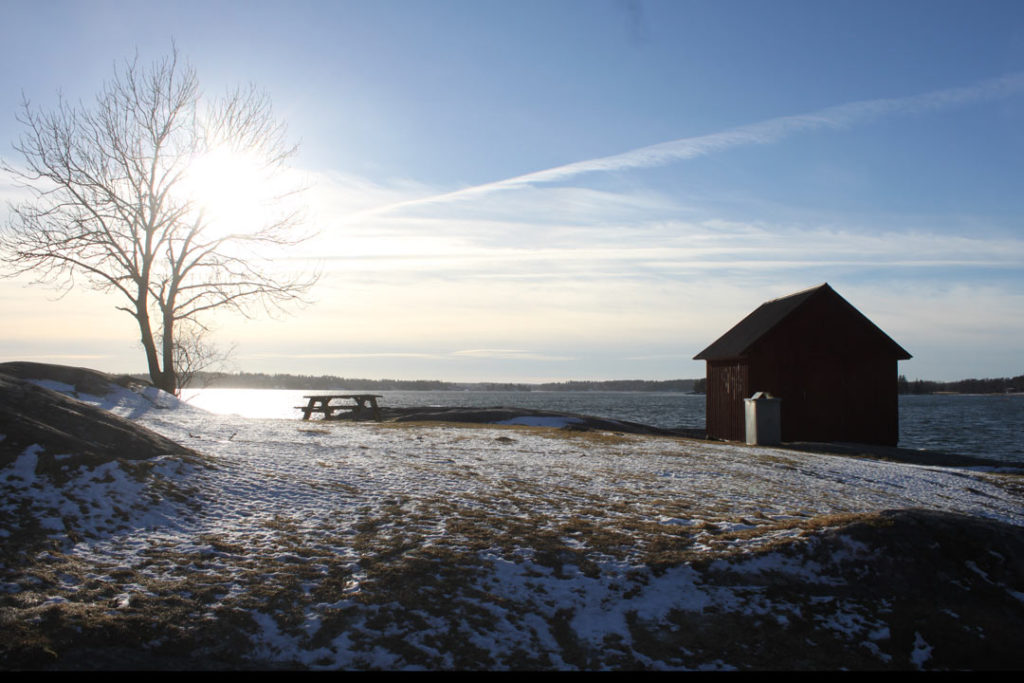
Dear Santa, We have tried to be responsible people all year. We are really hoping that this year we get the thing we have always wanted – healthy and productive oceans. We know that people haven’t looked after the oceans from the first time they were given to us, and we also know that the climate is changing and this is making us all very concerned! However, at Project Seagrass we have a plan to do our bit to help them get better. To help us achieve our aim we would like the following for Christmas this year: • We’d like seagrass meadows full of fish • We’d like everyone to know what seagrass meadows are • We’d like for everyone to know how diverse seagrass meadows are • We’d like for everyone to know where in the world all the seagrass was • We’d like for everyone to learn more about seagrass in school Finally, if you don’t think we are being cheeky, we’d like you to ask our friends in #TeamSeagrass what they would like to ask for from Santa this year, I’m sure they also have some great ideas! We’ll ask them to use the hashtag #DearSanta to collate a list for you. Thanks Santa Merry Fishmas! The Project Seagrass team.
International Women’s Day 2018: A call to #PressforProgress in recognising the role of women in fisheries
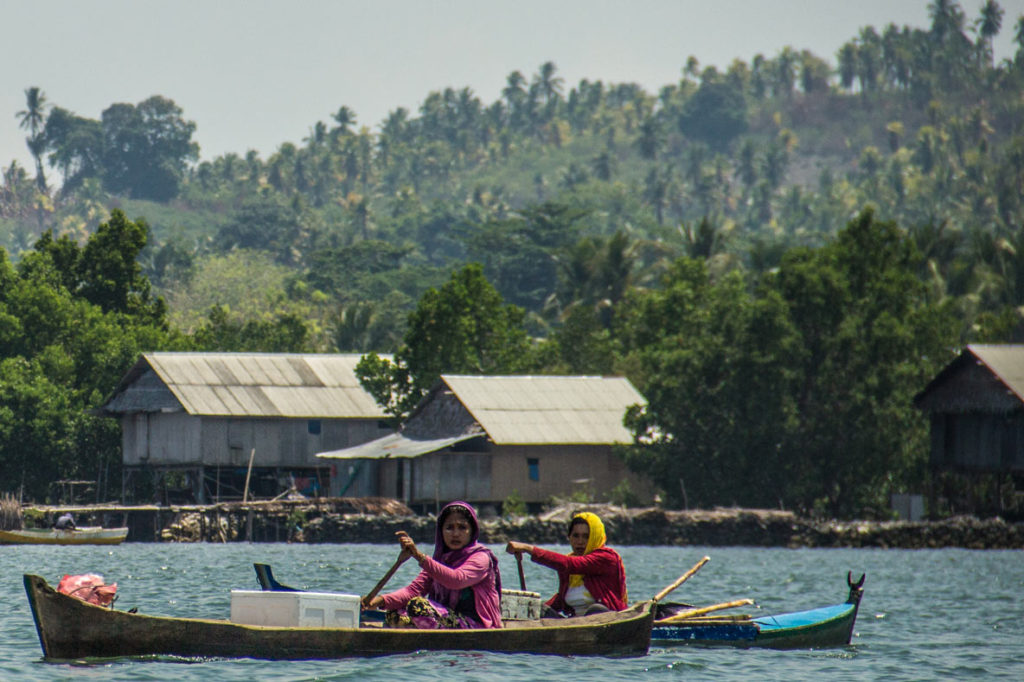
Today on international women’s day 2018 we collectively acknowledge and celebrate women’s achievements throughout history and across nations. It is also known as the United Nations (UN) Day for Women’s Rights and International Peace. Absolutely a day for shared and international celebration. Throughout history and across the world women have fought and continue to fight for equality. We are the individuals, mothers, grandmothers, great grandmothers, sisters, aunties and wives who support ourselves, our families, our friends, our countries and our planet for the most part with quiet affection and definitely not for reasons of recognition or wider acknowledgement. But it is important to recognise and acknowledge the role and achievements of all women, particularly those who are the silent backbone of their communities, where neither support nor recognition is widely offered. I could choose any number of amazing women to focus on here but would like to, very briefly, just draw attention to the women who play a significant yet quiet role in the world’s fisheries. Women play a significant role in fisheries across the globe Women (and children) are key providers for their families and communities across the globe though the work they do gathering seafood for food and for income. The fisheries involving women and children are generally low tech with minimal or no gear often where seagrass and reef flats are ‘gleaned’ by hand at low tide to collect valuable invertebrates (and sometimes fish) for food and for sale. These women and these fisheries remain ill acknowledged and unsupported by local, regional or international efforts to manage and maintain the sense of food security that they convey. But they make up a significant proportion of the small-scale artisanal fisheries that collectively contribute up to one quarter of the total global catch. These women work tirelessly to maintain a way of life or simply to provide protein and nutrition for their families. These are voices that need to be heard and have a significant role to play in the management and maintenance of local scale fisheries. A woman gleans at low tide in Indonesia These often ignored fishers can teach us all a lot about a lot of things, their ecological knowledge, dedication and hard work is something we could all learn from. So this year I would like to celebrate and acknowledge these women on this important day. I would also like to acknowledge and celebrate the amazing women who have always worked hard, led by example, encouraged (without question) and helped shape my own life (‘no matter what’). I am privileged to have and to have had these women in my life. Happy International Women’s Day!
What does the future hold for seagrass?
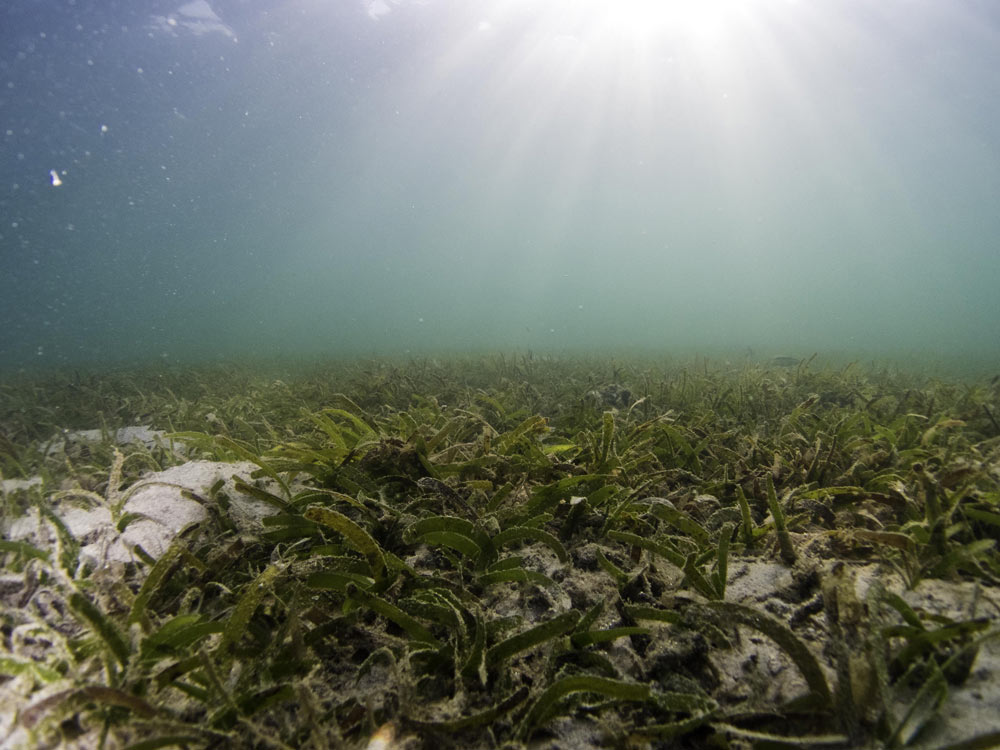
The savannahs of the seas – our humble seagrass meadows are in peril In its Green Seas episode, Blue Planet II introduced us to seagrass meadows. Scarcely touched upon in past media when compared to coral reefs, mangroves and even kelp forests, we learnt about the vast potential of these underwater grasslands to sequester carbon from our atmosphere through to providing habitat for charismatic marine life. But seagrass meadows are much more than this. Indeed, we would need a whole new landmark series to truly convey how vitally important these habitats are for biodiversity, people and the planet. Seagrass meadows are home to charismatic marine life, such as eagle ray’s which utilise seagrass meadows as juveniles in the Caribbean Our understanding of the importance of seagrass meadows is racking up. Recently we’ve discovered how seagrasses filter bacteria from coastal waters, helping to keep both people and coral reef’s healthy. We also now know that seagrass meadows are possibly the most underappreciated fishing habitats on earth, securing food supply and livelihoods. Seagrass meadows are a home, source of food and a feeding ground for numerous species of fish, invertebrates, reptiles, birds and mammals. They protect our shores from erosion, trapping sediment in place and slowing currents and produce oxygen that we breath. They truly are the oceans hero. Not the hero our planet deserves, but the hero our planet needs. Our green knight if you will. Women in Mozambique use fishing nets made from mosquito nets to collect fish within seagrass Despite all this, our seagrass meadows are in peril – unacknowledged, ignored in management and never the poster child of ocean conservation. What this has resulted in is a habitat in a state of emergency. From the shores of the UK to uninhabited islands within the Indian ocean, the tell-tale signs of man’s impact on seagrass meadows is visible. We simply don’t know how much seagrass there is globally. This also means we don’t know how much we’ve lost, bust estimates suggest that since the 1980’s we’ve lost over 35%. That equates to around a football field every hour. A scar on the oceans seabed. A small but visible impact from a boat anchor The threats we present to seagrass remains invisible, while we’re distracted by stories of deforestation and river pollution. Vast plumes of nutrient and sediment rich water flood onto our coastal seagrass meadows every day. Nutrients cause eutrophication, and opportunistic microscopic algae smother seagrasses, preventing the plants from obtaining food through photosynthesis. Elevated nutrients cause microscopic algae to smother seagrass leaves, reducing their ability to absorb light Similarly, sediment derived from coastal development and land reclamation burry the sensitive grasses, leaving nothing but a deserted wasteland. Contributing to this is the fact that fish species that might help seagrasses in their fight are gone. Exploited beyond belief and a result of seagrass meadows being ignored, time and time again when designing Marine Protected Areas. A static fish fence, or sero, used to funnel fish into a pen so that they can be collected daily has no preference for species or size Even in the UK, where we apparently “lead the way” in environmental protection, our seagrass meadows are in a perilous state. Despite being included within Special Areas of Conservation and Marine Conservation Zones, protection is woefully inadequate. But despite this doom and gloom there is hope for seagrass. Last year more than 100 scientists from 28 countries called for global action to protect seagrass meadows. It now seems that people are listening. It seems there is hope for these vital yet fragile ecosystems For our oceans, the futures bright and the futures green. Seagrass research and conservation are growing, and new information points to people as part of the answer. Citizen science has the potential to help members of the public to discover seagrass meadows while contributing to conservation at the same time. By making seagrass meadows a familiar species, we hope to use people to leverage change. While some governments are already looking to seagrass meadows as potential blue carbon hero’s and actively working on conservation strategies the reality is most are still naively unaware. For change to happen seagrass meadows can no longer be the ugly duckling of the conservation world and need to be given the limelight they deserve.
Festivals of Seagrass: Cause for Ocean Optimism!
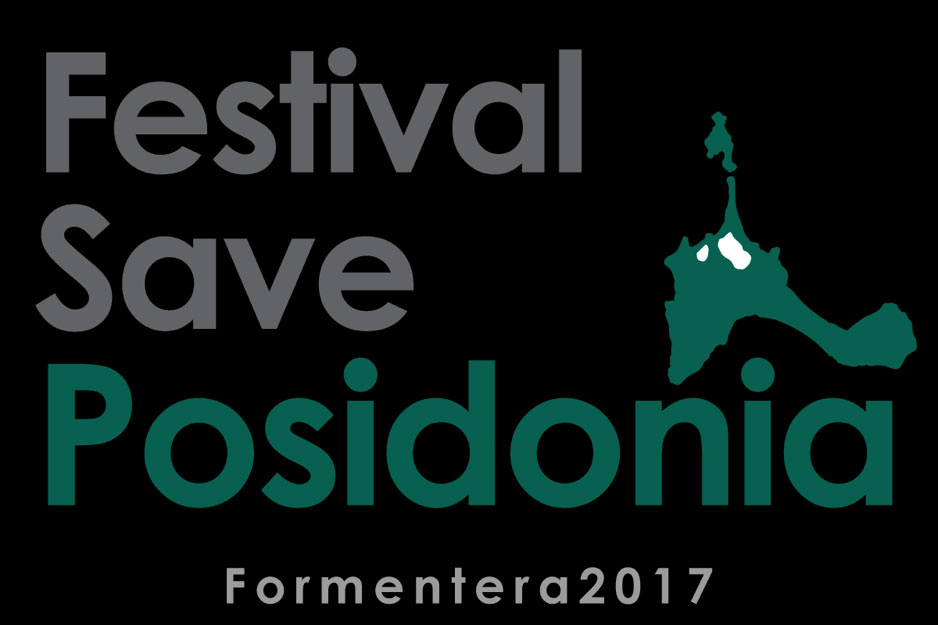
Over the next few days the Save Posidonia Project, Formentera celebrates the Save Posidonia Festival. The idea behind the project is to host a festival where culture, sport and environmental activities will be carried out that celebrate the fantastic contribution that the seagrass Posidonia oceanica makes to Mediterranean well-being. The festival is aimed both at marine professionals, as well as the public, and hopes to champion sustainability, so that it is not just an act or one off event, but becomes a permanent way of being. Outputs from the festival are concrete, with the most innovative scientific and environmental projects presented at the festival (linked to the preservation of Posidonia oceanica) having the opportunity to be financed through a collection made during by Save Posidonia Project. The projects are to be evaluated by a technical committee of high national and international recognition and the objective is to involve all individuals, companies and national or international organisations in raising awareness to take action in the conservation of such a critical ecosystem to the Balearic Islands. To participate in the festival all events must apply sustainability measures based on basic principles. Before the celebration of the event the promoters featured had to submit a plan to reduce the impact on the environment and respect the well-being of local people. However, this isn’t the first festival of this kind, indeed the Posidonia Festival has been active in the Mediterranean for nearly 10 years. Originating in 2008 on the island of Formentera (Spain), the festival has been hosted fifteen times in six different locations (Carloforte, Formentera, Mallorca, Santa Margherita Ligure, Sitges, Tavolara). Most recently Posidonia Festival was held in Mallorca with Three days of activities on Art, Nature and Sustainable Tourism have been held in Palma and Deià. The event will be held again next year. As an International Ecofestival of Art, Environment and Sustainable Development. The festival is a space for dissemination of knowledge and practices that promote the protection of the natural coastal environment and, at the same time, an opportunity for sustainable development, culture and tourism. For us seeing these ‘festivals of seagrass’ taking place is incredibly positive, since it is through platforms such as this that we are able to communicate seagrass science to the public! We’ve already heard this year about how seagrass science is growing, and I have witnessed first-hand the dedication and enthusiasm of this small (but growing!) group of seagrass scientists during the 12th International Seagrass Biology Workshop that Project Seagrass hosted in north Wales last year. Also, for me personally, I am thrilled to see the spotlight on the seagrass Posidonia oceanica since this species is critical to the sustainable provision of seafood in the Greek islands where I have made many friends. I find it deeply upsetting to witness the ecological, social and economic ramifications of degraded Posidonia oceanica meadows. The species has been estimated to be worth €190 million per year to Mediterranean fishing and the loss of this foundation species could result in both a loss of income and food security that these islands have long enjoyed. Keep up the good work #TeamSeagrass and together we will be the change.
How hurricanes such as Irma and Maria can devastate the Caribbean marine environment
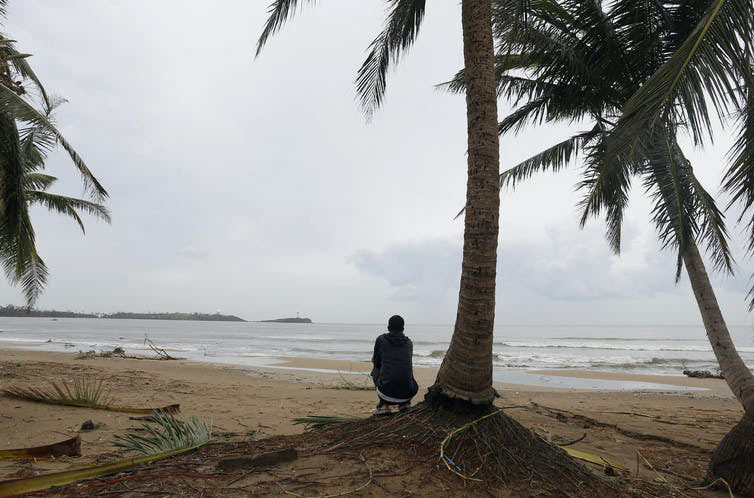
 Hurricane Irma – one of the strongest on record to hit the Caribbean – recently scoured the islands leaving catastrophic damage in its wake. And just as we began to piece together the devastating and potentially long–term impacts of Irma, Hurricane Maria has now left another path of destruction. Puerto Rico, the British dependency of the Turks and Caicos, and many other Caribbean islands have suffered what have been described as “apocalyptic conditions”. When the world talks of the tragic and devastating consequences of severe hurricanes, the focus tends to be on the land, and the people who live in affected communities. Indeed, nearly 30 people have been reported killed, while Puerto Rico Resident Commissioner Jenniffer Gonzalez has said that the hurricane has set the country back by “20 to 30 years”. We see images of toppled trees, torn off roofs and severe flooding. But marine environments can be also badly affected by hurricanes, with potential long-term effects. The force of hurricane winds, and the resultant tides and waves are so strong that both plants and animals are ripped from the sea floor leaving lifeless rubble and sediment behind. Hurricanes have a washing machine effect: they mix up coastal sediments with knock-on effects for marine life. Suspended matter left floating in the water column limits the amount of sunlight that reaches marine habitats and so reduces growth and recovery. Meanwhile in shallow coastal environments, debris, sewage and run-off continue to flow in to the sea long after the hurricane has passed. Human dependency on the sea  The fishery for Queen Conch (Strombus gigas) is a major source of income to many around the Caribbean. The devastation of coastal environments, particularly seagrass meadows, can also result in long-term losses of the benefits that humans receive from them, such as fisheries support or coastal protection. Damage to these ecosystem services consequently impacts human well-being, because people can no longer rely on them for their livelihood and food supply. Some of the most severely affected areas of the recent hurricanes in the Caribbean – Florida, Turks and Caicos, Puerto Rico, Cuba and the British Virgin Islands – all house extensive seagrass meadows. These shallow water marine habitats support valuable lobster fisheries, as well as shrimp, conch, and finfish fisheries. Seagrass also stabilises sediments and protects the white sand beaches that attract so many tourists to the region. Previous hurricanes, cyclones, and typhoons (weather events which are essentially the same but have different names depending on where the storm happens) across the globe have shown the severe negative effects they can have on these vital seagrass meadows. The seagrass plants are ripped up or buried under sediments, leading to their suffocation. The extensive associated murky water leads to widespread loss of seagrass, as was seen in the years that followed hurricane Katrina hitting the US. Initial indications from the Everglades in Florida show that seagrass destruction in the wake of Irma is extensive, with large piles already being washed far onshore. This should ring alarm bells for Caribbean fisheries, as hurricanes Katrina and Rita led to losses in the seafood industry that reached billions of dollars. The Caribbean spiny lobster fishery business alone is worth more than US$450m, and directly employs 50,000 people. Healthy seagrass provides the best fishing grounds with the greatest revenue, and the recent hurricanes have the potential to decimate this. Environmental impact But this is not just about money. Seagrass loss also threatens marine biodiversity and the health of charismatic species. After a severe cyclone in Australia in 2011, turtles and dugong starved due to the damaged meadows. In addition, seagrass is a marine powerhouse, which stores vast amounts of carbon in meadow sediments. When the seagrass is removed, this carbon is released back into the environment.  Caribbean spiny lobsters depend on clams they find in seagrass. Hurricanes have always been a part of life in tropical seas. The destruction they cause and their recovery have been observed throughout human history. What is alarming now, however, is the apparent increased frequency and intensity. The already poor state of the Caribbean marine environment restricts the ability of habitats such as seagrass meadows and coral reefs to recover from the effects of severe storms. Poor water quality and over-fishing, for example, promotes the overgrowth of algae, preventing recovery. With repeated hurricanes occurring over time periods that are insufficient for recovery to occur, this will only get worse. The severity of hurricanes Irma and Maria are a wake up call. We need a fundamental shift in how marine environments are protected to enable long-term sustainability for the food and income they provide. Many locations in the Caribbean, for example Puerto Rico, have ineffective marine protection rules and so destructive practices continue unchecked, meaning that when a disaster does occur, the environment is unable to recover. Although local actions against climate change are difficult to achieve, it is possible to manage river catchments to improve water quality, and focus on small scale immediate actions, such as implementation of marine protected areas to limit immediate and direct damage to coastal resources. Coordinated small scale actions will ultimately help enhance the resilience of the Caribbean Sea, and make sure that the environment can better recover from any future extreme events. Richard K.F. Unsworth, Research Officer (Marine Ecology), Swansea University; Benjamin L. Jones, Research Assistant at the Sustainable Places Research Institute, Cardiff University; Leanne Cullen-Unsworth, Research Fellow, Cardiff University, and Lina Mtwana Nordlund, Researcher in coastal environmental sciences, Stockholm University This article was originally published on The Conversation. Read the original article.
March – Seagrass Awareness Month
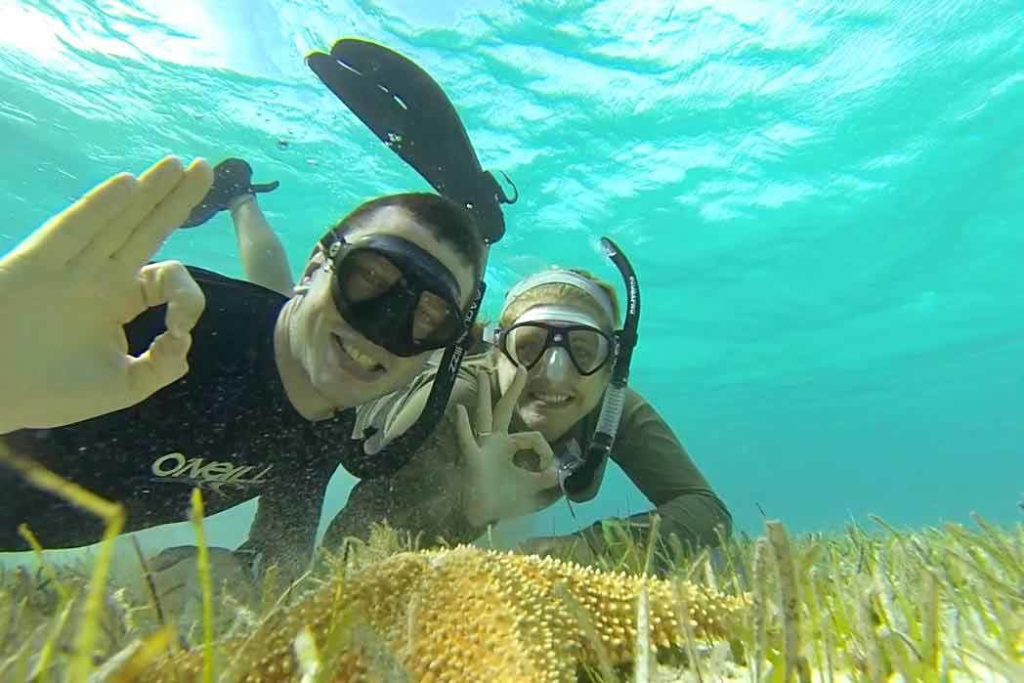
It’s only… SEAGRASS AWARENESS MONTH! ‘Seagrass Awareness Month’ has been designated as March ever since I started learning about these underappreciated ecosystems 6 years ago. However, the state-wide habitat engagement initiative appears to have been limited so far to just Florida in the USA. Why haven’t we made more of this outreach opportunity? I see no reason why, as a community, we can’t take ‘Seagrass Awareness Month’ global. Engagement this year from nations such as Norway suggests that there is appetite to build on the science communication momentum generated at the 12th International Seagrass Biology Workshop in Wales, and come together across the hemispheres to celebrate seagrass meadows! I know that as a Project Seagrass team we’ve spoken about the lack of an internationally recognised ‘Seagrass Day’. Yet, over in Texas, USA they will be celebrating their 8th Annual World Seagrass Day on the first Friday in April (April 7th, 2017). Celebrations will begin with a ‘World Seagrass Day’ parade, a state of the seagrass presentation and a half day science-based Seagrass Conference for fourth and fifth grade students from local schools. The team organizing the event estimate that just over 1,000 students will become more aware of the importance of seagrass meadows both to the local ecology and the local economy. I mean WOW! More of this is needed! Previously the Gulf of Mexico Foundation proclaimed the establishment of World Seagrass Day to be celebrated on the First Friday in the Month of March which would link in nicely with Seagrass Awareness Month. In fact, it might be worth settling on March the 1st as a day to kick-start the Seagrass Awareness Months’ festivities? Let’s get the discussion going, the World Seagrass Association will be meeting again in Singapore in 2018. Meanwhile here at Project Seagrass we’ll continue to develop our Seagrass Education and Awareness (SEA) resources. Do you like our new leaflet? We’ll be at the Edinburgh International Science Festival from the 10th-14th April and back at the Glasgow Science Festival on the 18th June. Drop in, we’ll have plenty of colouring opportunities for the kids and we’d love to chat with anyone who is keen to help us raise awareness of this essential ecosystem. Our Seagrass Education and Awareness (SEA) materials have been a hit with children It would be nice to think that by then we may have celebrated our first truly global World Seagrass Day and taken Seagrass Awareness Month to the international stage. Join the conversation, we’d love to hear your opinion. Contact us on Twitter @ProjectSeagrass or send us your thoughts at hello@projectseagrass.org. RJ
Five surprising things about seagrass that you might not have known
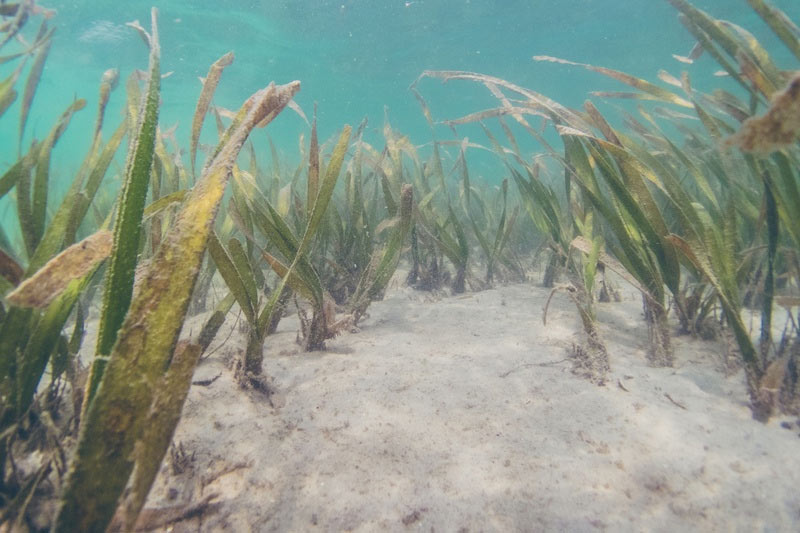
There’s an odd bunch of people with a strange sounding passion – a passion for seagrass. You’d think that anything with grass in its name might be boring, especially when compared to ecosystems like tropical rainforests, filled with birds of paradise or the vast savannas of Africa filled with elephants and migrating wildebeests. However, seagrass ecosystems hold a few surprises that might make you change your mind. 1. Seagrass buffers against ocean acidification. Seagrass uses carbon from the surrounding water in order to photosynthesise and grow. As the carbon is taken out of the water and into the plant, the seas acidity decreases. This may protect coral reefs from bleaching and allows corals to have calcification rates that are up to 18% higher. Seagrass helps coral to thrive. 2. Seagrass protects our coastline. As well as helping coral reefs, seagrass also helps to stop our coastlines from being eroded away. Even when a turtle has got the munchies and nibbled the seagrass right down to the roots, or a storm has come through ripping some of the meadow away, then seagrass still protects our coastlines despite its damaged state. The remaining stumps and strands reduce the energy crashing on to our shore lines by slowing wave speeds. A green turtle munching on seagrass. 3. It’s still sensitive! Just because seagrass keeps giving when damaged does not mean it is surviving. Seagrass restoration is a tricky and slow process. The conditions must be just right- when the surrounding bed is damaged the water will be flowing faster, taking with it any seeds or new shoots, as soon as the bed is damaged a vicious cycle of degradation begins. Scars in a meadow as a result of boat propellers ripping up the seagrass. 4. Endangered animals call seagrass home. When our local shop has sold out of iceberg lettuce, then we can try something else green and leafy, maybe some spinach. A lot of seagrass residents don’t have this luxury however, for dugongs it’s munching on seagrass or a rumbling tummy. Many endangered seahorse species can relate to this reliance on seagrass as it’s their one safe home where they can blend in and hide in the scenery. A grazing dugong. 5. It helps put food on our plates! When a meadow is in good condition then it provides protection for juvenile fish, including those which are commercially important. The Walleye Pollock, for example, is one of the world’s top 10 most landed fishery species and it commonly relies on seagrass to be a safe haven for it’s young to grow big and strong before ending up on our plates. For some communities the plant itself is also an important food source; the Seri grind the seeds to make a porridge like substance and others eat a part of the plant called the rhizome, raw. Florida Bay scallop growing strong in a seagrass bed.
The 13th International Coral Reef Symposium – Bridging Science To Policy
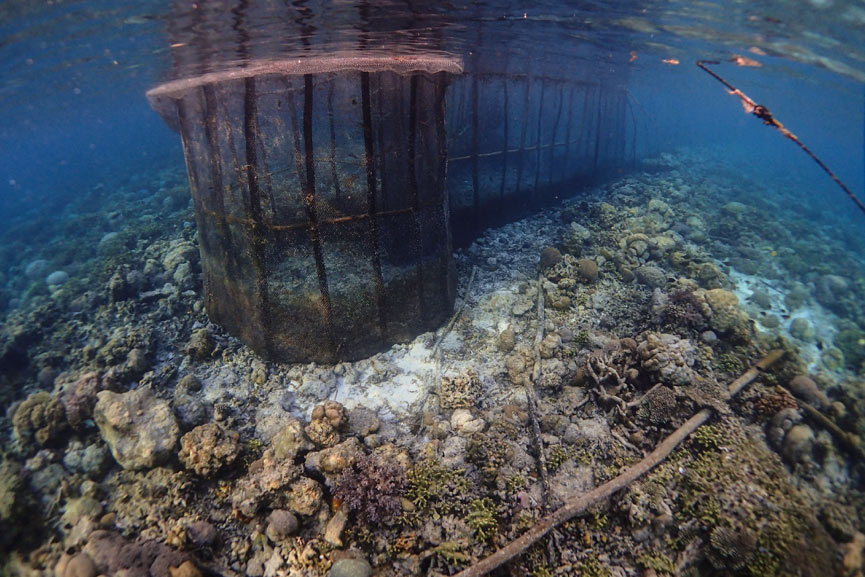
The International Coral Reef Symposium (ICRS) is the primary international meeting for researchers who are focused on coral reef science and management. In fact, as a conference it has a similar ecosystem focus to the International Seagrass Biology Workshop (ISBW) that we will be hosting in Wales this coming October. The Symposium, held in Hawai’i last week brought together over 2,500 coral reef scientists, policy makers and managers from around 100 different nations in a forum to present the latest research findings, case histories and management activities, and to discuss the application of scientific knowledge to achieving coral reef sustainability. Coral reefs are one of our planets most bountiful ecosystems and they provide essential ecological, economic and cultural services to the people of tropical and subtropical islands and coastal communities worldwide. Coral reefs can be are a huge source of income to adjacent coastal communities through eco-tourist activities. Latest estimates suggest coral reefs provide close to US$30 billion each year in goods and services, so not only are do they support enormous biodiversity they are also of immense value to humankind. However, whilst scientific knowledge about coral reefs has increased exponentially over the past few decades, the state of reefs globally has declined during this period. Globally coral reef ecosystems are being degraded. Multiple stressors from the global actors of climate change, ocean acidification and overfishing to localized habitat destruction (above) are all contributing to habitat loss. To address this disconnect, the theme of the 13th ICRS was “Bridging Science to Policy”, with specific goals focusing on: Improving trust and communications among scientists, policy makers, managers and stakeholders. Developing strong partnerships between political leaders and the scientific community. Guiding efforts and strategies for effective allocation of limited financial, human and institutional resources to halt and reverse coral reef decline locally and globally. Developing a framework for quantitatively evaluating the effectiveness of coral reef protection and recovery activities and initiatives by applying the best available science. The ICRS is of course devoted to the best reef science available, with the purpose of sharing scientific findings with government agencies, resource management, and non-government organizations throughout the world. Such conferences are immensely important because they provide the international science community with a platform to: Increase global knowledge and interest in coral reefs, including sustainable use and conservation strategies; Showcase successful science, conservation and management efforts; Develop collaborations and partnerships to increase international capacity to address coral reef issues; and Increase global awareness of reef degradation and possible solutions by extensive promotion in the media. It is exactly through increasing global awareness and the developing of collaborations and partnerships that we as a global community are likely to address global challenges, and it is for this reason that so many scientists are being encouraged to take the Oceans Online. To conserve the world’s oceans we must go beyond just the production of science, but to also use it to inform policy and management, and ultimately to catalyze change. This change will only happen if we can reach out to all stakeholders, and work together with a common purpose, for many this means stepping up to the challenge of becoming public advocates for our natural environment. Many marine scientists are taking the #OceansOnline! Increasing global awareness of reef degradation whilst promoting possible solutions and #OceanOptimism. There are already many scientists who have taken this message to heart and produce a wonderful array of online media through which to inspire and engage. For example a fantastic summary of the ICRS 2016 conference can be found here and outstanding leadership from all the signatories of the conference (the 2,500 scientists at the ICRS) imploring Australia to protect the Great Barrier Reef here. So for all those involved in LIVE TWEETING from ICRS2016 – thank you! All that remains is to share and promote the ‘distilled down’ “Take-Home Messages” from the conference that are pertinent for us all to share in and acknowledge. These are: Reefs are threatened, not doomed Climate change, pollution and overfishing are the 3 drivers that ALL have to be addressed Local, pro-active interventions can help to build resilience of reefs to climate change, but reefs cannot be climate-proofed Prevention is better than cure, but recovery is possible Scientists can help by spreading the message that reefs can still be saved if we actually try harder! So let us also get to work! #TeamSeagrass
Don’t let the UK become a fish out of water: For the sake of our seas let’s stay in the EU
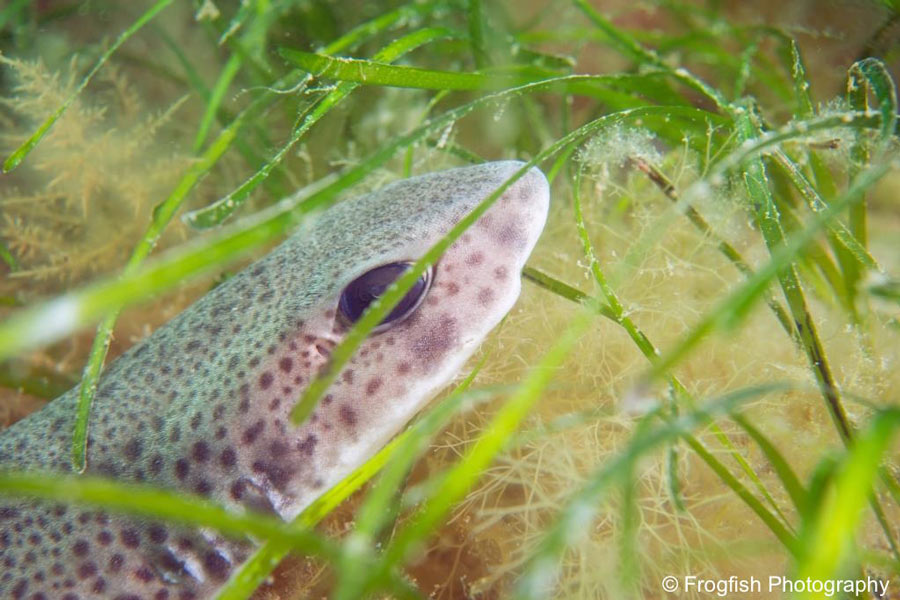
Our oceans and coastal resources have never been more important or under greater threat. Marine biodiversity has rapidly declined in the last 40 years, so much so, that marine populations have almost halved during this time. The very marine habitats and biodiversity that help ensure we have food to eat and oxygen to breath are being degraded the world over. At the same time, marine litter is on the rise, and issues such as climate change place an increasing level of pressure on the ability of our oceans to remain productive. In the UK the marine environment provides enormous prosperity and jobs, this amounts to a GVA of £38.5 bn and upwards of 290k jobs. At Project Seagrass we know all too well the value of our marine environment and the threats facing seagrass meadows, not just here in the UK, but across Europe and indeed across the entire planet. We exist to communicate the importance of these productive systems, and work to protect these ecosystems so they can remain productive in perpetuity. Although there is a lot to be worried about in our oceans and coastal seas there is also a lot to be optimistic about, especially in Europe. The European Union’s marine territory is the largest in the world, covering 20 million square kilometres of water – nearly five times the size of its land area. By working together, countries in the EU are making progress that is beginning to halt and reverse the trends of marine habitat loss, marine plastics, pollution, overfishing, and biodiversity loss. There are a lot of problems and a lot left to fix but the EU is a driving force behind positive action. In 1992 the EU adopted the Habitats Directive, which aims to protect vulnerable natural habitats and species (including seagrass), together with the Birds Directive, which has been creating Special Protection Areas (SPAs) since 1979, it remains at the very core of EU nature conservation efforts. These are key examples of how the EU is helping our oceans and has resulted in an expansive range of Special Areas of Conservation (SACs) around the UK coast. Many of these SACs contain extensive seagrass meadows. We’ve also had the Water Framework Directive, the Marine Strategy Framework Directive (MSFD) and the Bathing Water Directive that have all contributed to improving the health of our coastal seas from centuries of degradation. The MSDF is now a major EU force pushing for better Marine Protected Area coverage, Good Environmental Status (GES) and spatial planning of our coastal seas. The EU is also working to increase sustainability of our fisheries and to push the international community to undertake improved governance of the World’s Oceans. Since EU policy was reformed in 2002, the health of many fish stocks has improved. Indeed, by 2011 the majority of assessed fisheries were considered to be sustainably fished. Even the infamous North Sea Atlantic Cod, long the “poster child” of overfishing in our waters, is benefiting not just from the protection of our seagrass meadows (an important juvenile habitat), but from sustainable fishing measures. Scientists are optimistic that given its current rate of recovery the stock could be certified as sustainable as soon as next year. Without this array of EU legislation the UK government would likely have done very little for our coastal seas. In fact the UK government has repeatedly stalled on action over the years and had to be prosecuted by the EU on a number of occasions in order to take the necessary action for a clean environment. Often the only action the UK government does take to help is dependent upon EU resources such as the EU life programme. When the media and politicians discuss ‘EU Red Tape’ they often refer to the very legislation that is helping to protect our environment, keep us safe and ensure people’s rights. This is not a hindrance it’s a help. We should also not underestimate the contribution that the UK academic community has made to marine conservation and management. This is a sector of the UK economy that is heavily dependent upon EU wide collaborative funding and knowledge exchange. Science doesn’t happen in the UK alone, scientific progress is based on the scientific community learning and progressing together. Such progress ultimately has benefits for how we learn to sustainably manage and exploit the resources that our oceans provide. Remaining in the UK will help push forward the science needed to conserve our oceans for future generations. The seas around the UK need to be part of Europe. The so called ‘Brexit’ would be a catastrophe for our coastal seas, and put these marine resources that are so critical for our long-term future in jeopardy. Our oceans in Europe need a united EU, with the UK as a leading partner in governing these critically important resources. At Project Seagrass we believe that continued UK membership of the EU is vital for the protection of our oceans, coastal seas and specifically our seagrass meadows into the future. At Project Seagrass we recognise that the EU isn’t perfect but we also understand that we have to be very careful what we wish for in terms of the impact leaving the EU would have on our oceans and coastal seas. It’s evident that UK politics has a tendency to be short term and we’re constantly reminded that the natural environment is seen as an impediment to economic growth. EU agreements help mitigate this by encouraging the UK government to be more long term in policy, protecting our environments not just for us, but for future generations to come. We’re voting not just for our oceans, but our children’s, and grandchildren’s oceans. At Project Seagrass we believe that voting to stay in the EU is a vote to sustain our environment, including our seas. Download this statement here.
International Women’s Day – “Planet 50-50 by 2030: Step It Up for Gender Equality” #pledgeforparity

Today, the 8th March 2016, is International Women’s Day. The UN’s International Woman’s Day theme for 2016 is “Planet 50-50 by 2030: Step It Up for Gender Equality”; in addition, an independent campaign, separate from the UN, is being run by financial firm EY (with other corporate partners) which is organising events around a #PledgeForParity hashtag. Today is of course a day to celebrate the social, economic, cultural and political achievement of women. Yet it is also a day to raise awareness of the need to urgently address gender inequalities, and take action to accelerate gender parity. In 2014, the World Economic Forum predicted that it would take until 2095 to achieve global gender parity. Then one year later in 2015, they estimated that a slowdown in the already glacial pace of progress meant the gender gap wouldn’t close entirely until 2133! This is, of course, completely unacceptable. We can, and must, pledge today to take a concrete step to help achieve gender parity more quickly. For Project Seagrass it must be about helping women and girls achieve their ambitions, calling for gender-balanced leadership, and creating a culture where we respect and value differences. We must aim to develop an inclusive and flexible culture within our charity and to root out workplace bias, be it conscious or unconscious. At Project Seagrass each of us can be, and has been, a leader at different times and that is something that should be celebrated. For us, International Women’s Day is about publicly committing to take pragmatic action to accelerate gender parity within both our organisation, but also within our work. A women ventures home with fish that she has caught in coastal seagrass meadows of norther Mozambique (Photo: Benjamin Jones) We work in numerous regions across the globe and there is a common theme to all of them – a paucity of statistics available relating to the number of women involved in fisheries-related work, even though it is understood by all of us that women play critical roles in the sector. The roles that women play in the fisheries we work with often incorporate a wide range of activities, but these vary in time and place. Unfortunately, from what little research that has been done, much of the data does not capture the true multi faceted nature of work undertaken by women in fishing communities, and therefore even today few policies are formulated with the work conducted by women in mind. Indeed, it can be argued that the common thread that ties women who work in fisheries together globally is that their work is rarely seen as “productive”. Time and again it is perceived as having a low social value, often being seen as an extension to the “domestic” space and not productive work in its own right. In Northern Mozambique, Women are a key part of coatsal seagrass fisheries (Photo: Benjamin Jones) In reality, however, women contribute hugely to global fisheries; even in their marginailsied position, they often manage to perform multiple roles that straddle the home, the family, the community and the workplace. We must celebrate womens’ capacity to perform roles of both production and reproduction and create the social and cultural norms that recognize the values of these roles. Too often the production of life (reproduction) is not recognized as valuable, economic productivity and yet it is intrinsic to sustainable growth and development! We must redefine what is valuable by addressing the inequalities that exist between men and women, and it is here that we must #pledgeforparity In the spirit of celebration of International Women’s Day we would like to take this opportunity to thank both of our interns; Laura Pratt in Cardiff, and Lauren Clayton in Glasgow for all their hard work to date and for their contribution to what has been a great year of growth and development of Project Seagrass so far! We’d also like to thank our Director Leanne Cullen-Unsworth for her leadership and vision and we wish her well on her maternity leave. We’d also like to recognize both the ‘productive work’ (carrying BRUVs) and invisible emotional support of our partners in being patient with us driving the Project Seagrass agenda and making Project Seagrass what it is today. Thank you, and happy International Women’s Day to you all! Project Seagrass interns Lauren and Laura flying the UAV (Photo: Benjamin Jones) Project Seagrass Director Leanne Cullen-Unswort mapping seagrass in Wales (Photo: Richard Lilley) Sarah Jane Pope carrying monoBRUV platforms 5km across the island of Lipsi (Photo: Richard Lilley) PS – A reminder of our official launch this Wenesday the 9th March 2016

